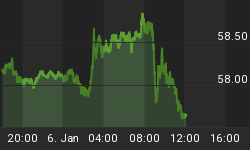A moderate optimism is taking hold in the US, despite a few challenges at home and abroad. US 10-year Treasury yields may reach 2.50% this year, while the US Dollar Index may decline to 77.00 on the futures contract.
US economic growth could expand in the last part of the year, after all the fiscal challenges are met. Labor market conditions are improving again, and the unemployment rate may move closer to 7.0% by the end of 2013. Household financial situations have improved, while credit standards have eased. Demand for automobiles and housing are rising. In the past four months, manufacturing output increased almost 5.0% annualized. According to the Empire State Manufacturing Survey, factory growth might have risen in February. It is true that small business confidence remains low as a result of the fiscal struggle. In particular, the so-called "sequester," broad-based cuts to federal spending, is contracting investments. Getting out of trouble requires time. The Federal Reserve has set 2015 as a good target to stop all the monetary incentives.
Moody's has predicted that the United States could be downgraded if the debt is not substantially reduced. A last minute compromise is expected in Washington, D.C. The economic growth could expand and Bond yields rise to 2.50%-3.0% by the end of 2013. Since 1982 yields have fallen approximately 27% top-to-bottom before rising approximately 16% bottom-to-top.
The US dollar, on the contrary, may strengthen until midyear to 82.00/84.00 on the US Dollar Index futures. Then, it might decline again and target 77.00/75.00 by year's end. ECB President Mario Draghi said actual levels represent a fair value for the Euro against the greenback. In Europe, however, fairness is a relative term. What is fair for France might not be fair for Germany. In effect, the recession's tail is worsening, but Germany is leading the continent out of the slumps. In February, the Ifo Business Climate Index rose for the fourth straight month and reached the highest level in almost three years. Both expectations and current conditions jumped higher. The Ifo index follows the ZEW and PMI surveys, which showed that economic growth is moving again in Germany.
EUR/USD declines are limited. The focus of the financial community is on the Italian elections, where the center-left coalition led by Bersani-Monti appears able to win the political majority. The market is meeting a good support at 1.3170. The next level to watch for is 1.3020. The longer-term picture stays bearish for the US dollar until the Federal Reserve switches its monetary policy from easy to restrictive. Positive real yields are in fact necessary to see the US dollar rising again. It will happen eventually, but we are not there yet. In the last quarter of 2013, EUR/USD should expand toward 1.38/1.42.
















